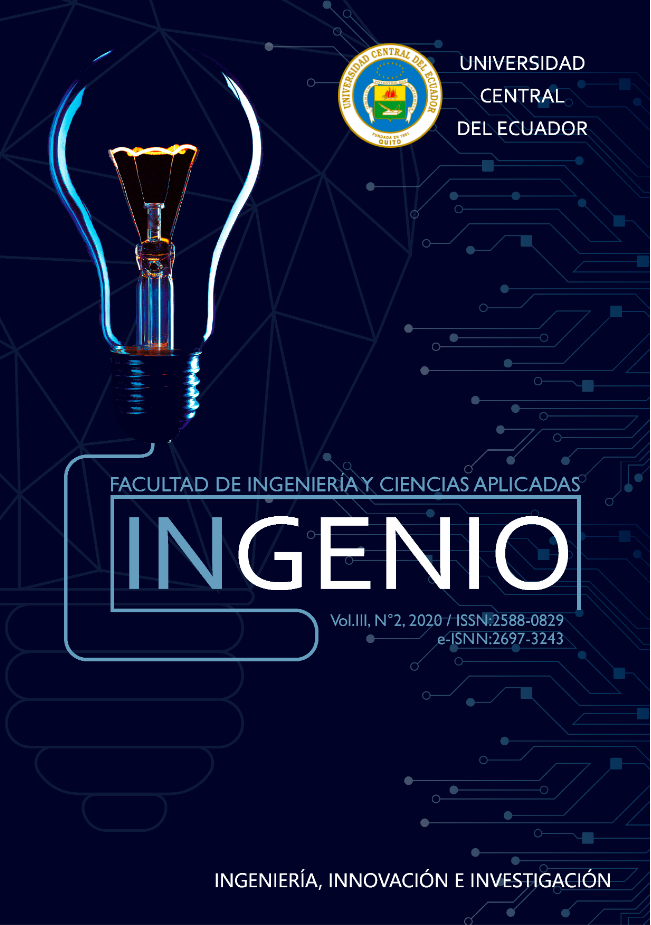Evolution and Trend of Alternative Internal Combustion Motor Control Systems, Literature Review
Main Article Content
Abstract
This work makes a comparison between different studies related to the operation of internal combustion engines. The behavior of the engine is strictly governed by the different control systems among which it has an electronic injection, variable distribution systems, turbines of variable geometry, among others. This type of system is in charge of making the different adaptations to achieve the operating conditions and the requirements that are demanded of the engine in various driving situations. The power demand, the emission limit required by the different standards, as well as the confidence and security required by the users of these engines, depend directly on the control system that has been implemented. Currently, electronic control systems are based on the processing of digital and analog data derived from the measurements of the different receiving sensors directly from the motor, and whose information determines the activation of the actuators according to the motor's operating parameters. immersed within the cartography that has been designed for each case. Electronic systems, due to their importance and their wide margin of control with respect to mechanical elements in the engine, need to be calibrated and directed by the software.
Downloads
Metrics
Article Details

This work is licensed under a Creative Commons Attribution-NonCommercial-NoDerivatives 4.0 International License.
References
L. Guxxella, Introduction to modeling and control of internal combustion engine systems, Springer, 2010.
R. Van Basshunyesen, Internal combustion engine handbook: basics, components, systems, and perspectives., SAEInternational, 2004.
J. M. D. Francisco Payri, Motores de Combustión Interna Alternativos, Primera ed., vol. I, Reverte, 2011.
Sciarretta, A y Guzella, L, «Control of hybrid electric vechicles,» IEEE Control Systems Magazine, pp. 60-70, 2007.
J. Conesa, «Motor de Combustión Interna,» 2011.
U. Kiencke, Automotive control systems for engine, driveline, and vehicle, Springer, 2005.
C. Guardiola, Detección y compensación de irregularidades de inyección a través de la medida del régimen instantáneo del turbogrupo, Reverté, 2005.
Hillion, M., Chauvin, J., Grondin, O. y Petit, N., «Active combustion control of Diesel HCCI engine: Combustion timing,» SAE Technical Paper, 2008.
Lapuerta, M., Armas, O. y Hernández, J. J., «Diagnosis of DI Diesel combustion from in-cylinder pressure signal by estimation of mean thermodynamic properties of the gas,» Applied Thermal Engineering 19, pp. 513-529, 1999.
R. Moos, «A brief overview on automotive exhaust gas sensors based on electroceramics,» International Journal of Applied Ceramic Technology, 2(5), pp. 401-413, 2005.
K. Ogata, Ingeniería de control moderna, Pearson Education, 2003.
A. G. López, «Ecuaciones Diferenciales I,» Madrid, 2004, p. 115.
Dauron, A., «Model-Based Powertrain Control: Many Uses, No Abuse,» Oil & Gas Science and Technology, pp. 427-433, 2007.
J. E. Guarella, J. E. Guarella, L. Rodríguez y I. Bagatto, Sensores y actuadores en motores, Buenos Aires, 2011.
Proakis, J. G. y Manolakis, D. G., Tratamiento digital de señales, Prentice Hall, 2007.
BES - Bosch Extranet Service, Sistemas de Inyección Electrónica, 2010.
Munoz, M. y Payri, F., Motores de combustión interna alternativos, Fundación General de la UPM, 1989.
Galindo, J., Climent, H., Guardiola, C. y Doménech, J., «Modeling the vacuum circuit of a pneumatic vale system,» Journal of Dynamical Systems Measurement and Control, p. 131, 2009.
D. C. Montgomery, Diseño y análisis de experimentos, Limusa-Wiley, 2002.





